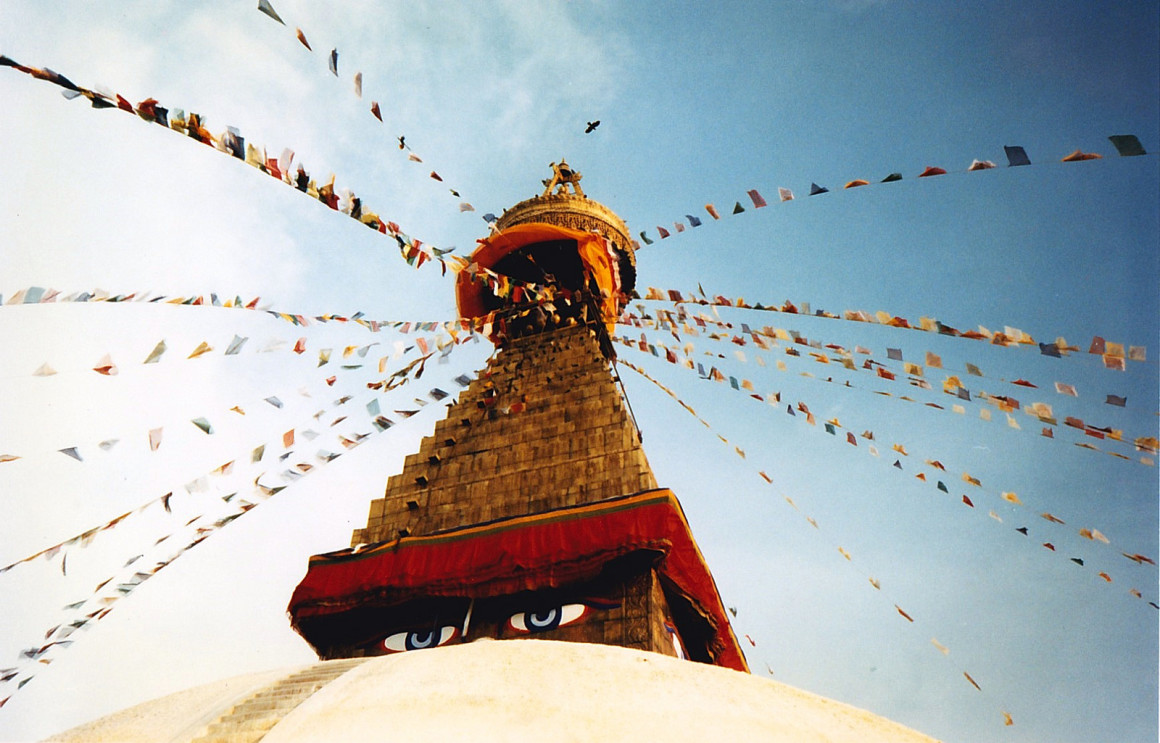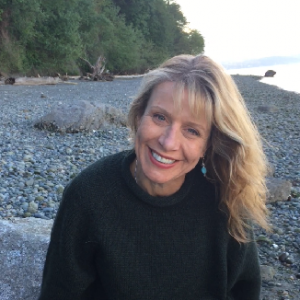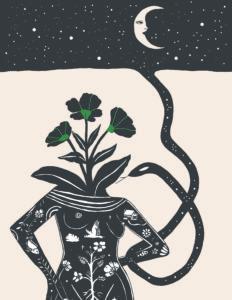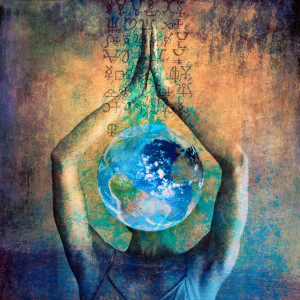This spring, I read an article about why humans experience awe, a state the authors describe as “being in the presence of something vast that transcends our understanding of the world.” They describe awe as the “ultimate collective emotion,” one that helps bind us to others and connect to some greater good. I agree with that premise, believing the experience of awe creates greater gratitude and generosity in daily life and offers a deeper understanding of the majesty and magic of our shared planet, a way through the ordinary to larger and more loving truths.
In the past couple of years, I’ve been open to awe in a way I haven’t felt much since childhood. After nearly dying from a major infection in 2009, I found myself needing to connect to something bigger than the day-to-day as I healed. The added stressors of never earning enough money, raising five children, and a difficult love affair brought me to my knees and then to a regular yoga practice to force my heart open, with a burning desire to start feeling joy in the world again.
This falling back in love with the world carried me in turn to Sayulita, Mexico, in May of this year to complete yoga teacher training. There, the rhythm of the ocean and repetitive hours of asana and meditation increased my openness to the ever-humming energetic world—a doorway to awe.
Just before leaving for Mexico, I heard about the April 25 earthquake in Nepal that killed more than 8,000 people and injured more than 19,000. The Monday after the quake, I sat on the sun-soaked wooden planks of my back steps with a cup of tea, dog asleep beside me, casually reading my newsfeed articles and updates until one sentence demanded rereading. Startled, I learned that two of my children’s friends, young women from Seattle, were among the 250 people missing in Nepal’s Langtang Valley. While Bailey and Sydney’s parents slept through the greyness of an April evening in 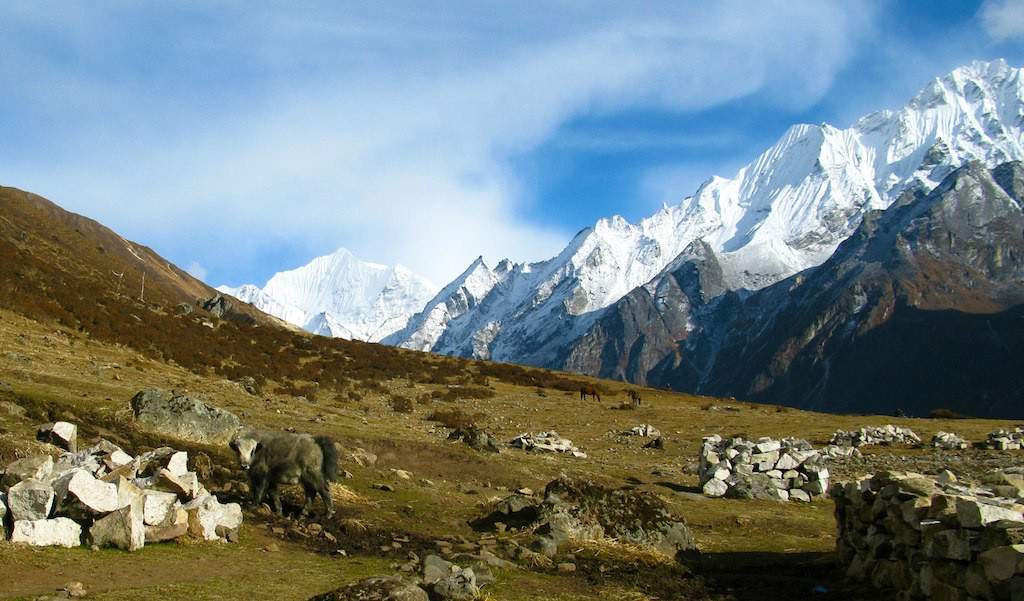 Seattle, their world had been literally and figuratively shaken, cored, reduced to dust and mud, thousands of miles and far too many hours away.
Seattle, their world had been literally and figuratively shaken, cored, reduced to dust and mud, thousands of miles and far too many hours away.
I called my daughter and son immediately, wanting to make sure they heard about it from a loving voice rather than the news. Bailey and Sydney had been trekking through Nepal, following a path familiar to hundreds of thousands of foreigners over the years, taking a gap year before coming home to the Pacific Northwest to start college. Our family knew Bailey well, as she had dated my triplets’ stepbrother throughout much of high school, boxed at the same gym as I did, and danced through the same high school plays and musicals as my daughter. I’d driven Bailey home or fed her dinner at our kitchen counter often, the way you do with your children’s tribe of friends. She was active in outdoor programs and famous at our house for her wilderness skills, traveling in a pack with my sons and daughter, rolling through my kitchen on the way to play practice or dinner or prom, so filled with music and movement my kitchen could barely hold them. Legs folded underneath, they sprawled across my porch long after I went to bed, talking through their dreams, ideas, philosophy, whatever lit them up. So magical and full of awe.
In 2009, I nearly died from a necrotizing infection of my mediastinitis or chest wall. In ICU then, the veil between the worlds felt thin. The days were filled with too-bright lights and hurried doctors, not-so-careful nurses. The nights went on forever. From my bed, I could see the lights of Seattle as the hospital room filled with shadows, like other patients that had passed on were moving through the room. I was not frightened, just sure and aware of the unseen world outside our fingertips.
Mexico felt a bit like that as well, like part of my mind and heart were in Nepal, searching, while my body meditated and moved by the ocean. Sayulita was the exact right place to receive yogic lessons about the eternity in each cell, the nature of love, the body and time. Though the cycle of each day felt like a duality: days spent studying sutras, repeating asanas, assisting other students until muscles ached, eating fresh avocados, and enjoying so much laughter. Followed by nighttimes spent logging online, joining neighborhood and Facebook groups regarding the many missing trekkers, reading updates from family and friends, hearing from Sydney’s brothers who flew to Kathmandu to see what they could learn. My friends in Mexico kept me grounded, on the mat and in the world, simply present, knowing that love and presence were the biggest supports they could offer. Every night I dreamed of that mountain, rocks falling and confusion, and yet I felt no fear, only a deep, deep sense of gratitude.
Checking in on social media every night, I learned how Nepalese families with too little to share were in fact sharing, and through their own unbearable losses were repeatedly helping foreigners find their way to communication. Families all over the globe were meeting online and collaborating to fund helicopters and rice, to share intelligence and photographs, and to buoy others’ spirits as the days rolled by. The nets that were cast from country to country, family to stranger, were astonishing and intimate. And the missing-person photos posted by families of lost trekkers were all smiles—people truly alive in the world, doing what they loved. While the online world drew together in support, families in our Seattle neighborhood drew together in action, raising money, meeting to send lanterns to the sky, lining the streets with yellow ribbons, and being present to the girls families’ journey of unimaginable not knowing, surrender, and grief.
On May 14, a week after I returned home, Bailey and Sydney’s families released a statement, saying they believed the girls perished during the earthquake and catastrophic landslide in Langtang. In the midst of their deep and profound grief, they somehow figured out a way to share the donations they’d received with those who needed them most.
It is my hope that those girls’ last hours were filled with awe, that the holy mountains they stepped through answered something wild and primitive in them that beats at the heart of all of us.
I am myself awed over and over again by the beauty of this life, the light in the darkness, the way we support each other, humans being in a state of grace. I hope I am able to tap in again and again to the center of joy that vibrates in us, the way it ebbs and flows, and to remember that the path back to joy comes through love. I’m not sure of much in the world except this, that to remain—even in the saddest of times—open to awe is both surrender and gift.
+Want to support earthquake recovery in Nepal? Here's one organization doing great work: dana.io/nepalearthquake.
Photos (from top): “Boudhanath stupa, Kathmandu, Nepal” by SarahTz from Flickr (CC); “Upper Langtang Valley” by Scott Mattoon from Flickr (CC)

